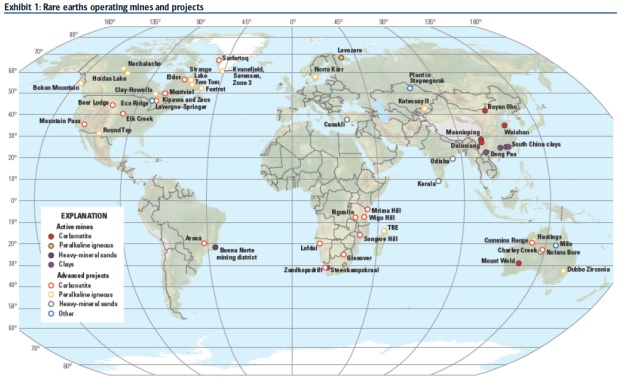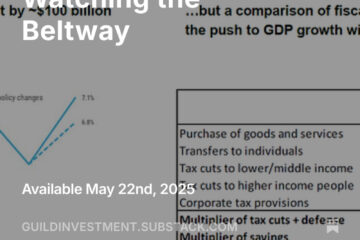Gold’s rise continues. Since the shock-and-awe fiscal and monetary response to the covid shock got underway in March and April, we’ve been pointing out the obvious long-term impetus it would provide for gold. We won’t rehash all the data here — the big picture is obvious enough. The monetary expansion is as unprecedented as the fiscal expansion. Around the world, central banks are ballooning the monetary base, and debt — both government and non-financial corporate — is reaching highs comparable only to the aftermath of major global wars. Put simply, this process can only be rationally described as laying the foundation for monetary debasement and sowing the seeds of future inflation — even while the immediate environment remains deflationary due to the economic contraction caused by the covid shock.
Please don’t misinterpret these remarks: we are not calling for immediate inflation, much less the hyperinflation of some unfortunate historical episodes. However, investor sentiment is increasingly moving to price in future inflation, for many reasons. Preeminent, of course, are the monetary and fiscal policies referred to above. The Federal Reserve’s external communications and internal discussions show that it will be ready to let the economy “run hot” as the recovery progresses and inflationary forces build. It will tolerate realized inflation above its target in an effort to compensate for the previous periods of depressed inflation and depressed growth. And a sea change appears to have come to pass in U.S. politics, with debt vigilantes relegated to the fringes and nowhere to be found in either party. How different from the response to the 2008 bailouts, where Congress gave the “wrong” answer and had to be told to go back and vote again.
In these circumstances — and especially where these circumstances are unfolding not just in the United States, but in a coordinated fashion around the world — investors will naturally turn to the great historical hedge against monetary debasement: gold.
Central bank action is pushing real rates relentlessly negative. While the nominal yield on the 10-year U.S. Treasury is still positive, its real (inflation-adjusted) level is at about –0.9%. If that situation remains or intensifies — which is certainly possible, if the Fed’s forward guidance unfolds as it has been communicated — gold will become an increasingly attractive store of wealth in spite of the fact that it incurs holding costs and offers no yield.
However, maintain perspective. Our perennial response to talk about the dethronement of King Dollar is simply, Who’s going to be king, then? The global economy cannot transact in gold. While there are fiscal and monetary pressures building that are causing rising concern about future inflation, we do not see the prospect of disorderly future dollar movements — in short, we see no likelihood of a dollar collapse. Indeed, with fiscal and monetary expansion as the preferred crisis response in every economy on the planet, and the U.S. still preeminent as the best-managed, most capital-friendly economic and political system, there is currently nowhere else to go, and all knees will ultimately still have to bend to King Dollar.
In the longer arc, gold makes a great deal of sense as an inflation hedge, and will offer increasing marginal competition to government bonds yielding negative real rates.
In addition, we note that gold supply has become constrained, as miners’ exploration and capital budgets have been in decline since gold’s last peak, with mine supply turning negative in 2019. There are few greenfield mines ready to come online from major producers, and the timeline for new capacity is lengthy. So far, miners are maintaining cash flow discipline rather than chasing growth. This presents the prospect of several years of rising demand and flat supply.
Of course, all this does not mean that investors’ attention should not remain focused on stocks — which will continue to benefit from the quest for yield in the environment of financial repression that central banks create.
Interest in gold itself is only one aspect of investor attention to emerging or anticipated inflation trends. Other metals and mining shares can also benefit. Silver is an obvious example, and it is being boosted not just by inflation fears, but by its industrial importance in expanding green energy infrastructure and information technologies.
Rare earths are another example. They have come to investors’ attention again as relations with China have deteriorated. We wrote on the topic last year, and recap our thoughts below. The topic is relevant because of recent plans to revive the major U.S. rare earths mining site in Mountain Pass, CA.
Rare Earths: Economics and Importance
“Rare earths” are elements, primarily in the lanthanide series of the periodic table of the elements, that are small but critical components of many modern technological products — especially batteries, magnets, lasers, exotic alloys, catalysts, nuclear controls, and advanced glass formulas for screens and lenses. They are not particularly “rare” — the most plentiful of them exist in the earth’s crust in greater amounts than minerals such as copper — but were named at the end of the 19th century because they existed in complex mineral deposits and were then challenging to mine and refine.
Rare earths deposits exist plentifully in many places around the world.

However, although deposits are so widespread, production is currently not. Until the 1980s, the U.S. was the main producer, but over the course of the 1980s and 1990s, with government support, Chinese producers undercut their competitors, and production elsewhere in the world gradually shut down.
The U.S. Department of Defense report that came out in September, 2018 on the security of the U.S. industrial supply chain noted the importance of rare earths in particular:
“As part of the increasingly global manufacturing and defense industrial base, imports of strategic and critical materials, such as rare earths, have increased, causing a trade-off between supply dependency and lower costs. Rare earths are critical elements used across many of the major weapons systems the U.S. relies on for national security, including lasers, radar, sonar, night vision systems, missile guidance, jet engines, and even alloys for armored vehicles… China’s domination of the rare earth element market illustrates the potentially dangerous interaction between Chinese economic aggression, guided by its strategic industrial policies and vulnerabilities and gaps in America’s manufacturing and defense industrial base. China has strategically flooded the global market with rare earths at subsidized prices, driven out competitors, and deterred new market entrants. When China needs to flex its soft power muscles by embargoing rare earths, it does not hesitate, as Japan learned in a 2010 maritime dispute.”
Investment implications: Although hyperinflation is extremely unlikely in the United States, current monetary and fiscal policy worldwide is likely to create future inflation, and investors would be wise to be attentive to gold as a hedge, as we have been pointing out since the covid crisis began in March. If Fed policy continues to repress real rates into negative territory, gold will become increasingly attractive to investors as a store of wealth. Other precious and industrial metals and their mining shares could also be attractive, boosted by a confluence of monetary, technological, and geopolitical trends. Reshoring is likely to continue, and important industrial metals such as rare earths will be increasingly important and strategically significant. With all that said, however, investors should not forget that stocks — and, in the current environment, technology-focused growth stocks — should remain the bread and butter of their portfolios.




1 Comment
Jeff S. · August 5, 2020 at 9:17 pm
I am a professional trader and work the markets regularly.
Whereas I find your assessment to be rational and forward looking, I would add that some components, particularly as regard Rare Earths, should be qualified.
Wouldn’t one expect this sector, uniquely, to be contingent on the Presidential election? Trump wins = a continuing pullback of all essential productivity from China and returning to the USA. Biden wins = to expect a slackening of urgency in this respect and thus a realignment of investments.
Comments are closed.